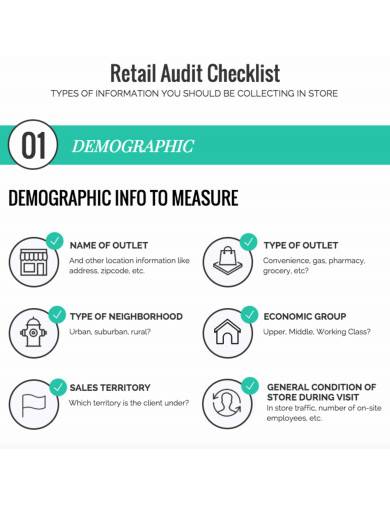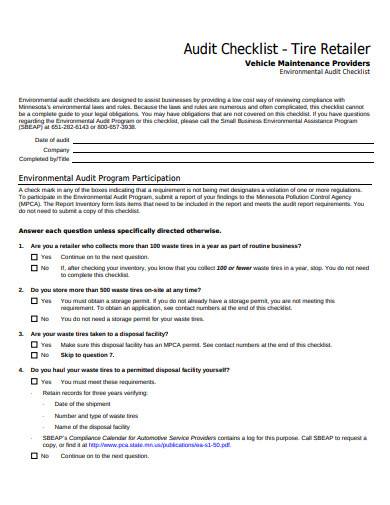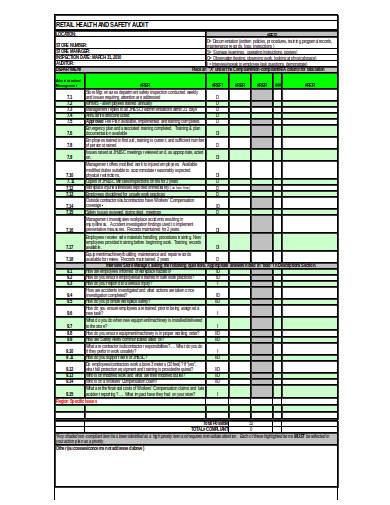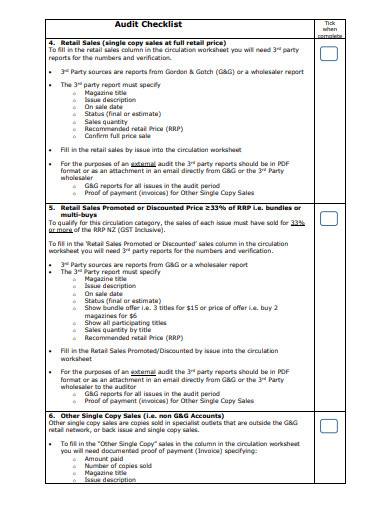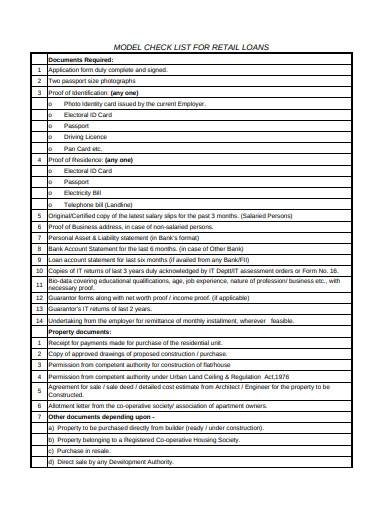Keeping track of something is necessary to see how well it’s doing. Whether it is a project, a person, or even a journey, getting updates is good for you to see how it has progressed. That’s why doctors ask patients to come back for check-ups, to know if they are getting healthier or not. It’s also like how travelers check their GPS to see if they are getting closer to their destinations. Most of the time, people would use word checklists to check something thoroughly. If an item finishes with inspection, the checker can then move on to the next. In merchandising, the document form inspectors use is a retail audit checklist.
If you are in the business world, you have to make sure that the selling and handling of your products happen with care. Being absent-minded and careless with your merchandise can take a massive toll on your business. You need to inspect every aspect of your products, your store, and your team. This is called store audits. Store audit gives you insight into how your store is doing. The most useful tool inspectors use is a retail audit checklist. This helps retailers conduct a detailed inspection of all the elements of the product and the store. If your business has more than one outlet, your inspection checklists could differ.
Resting on Relevance
As consumer behaviors change, the processes and strategies of the retail industry change as well. That is why it is best to make sure that your stores are in with the times. This makes store audits all the more crucial for retailers. Store audits help you formulate retail analysis to ensure excellent customer experience. It tackles inventory, display, product quality, and team performance. Remembering all these elements might be hard to do. That is also why retail audit checklists are essential. Your list helps you identify which parts need examining without the fear of accidentally skipping an item or two.
5+ Retail Audit Checklist Samples
When conducting a retail store audit, you need a tool that can make your job easier. What you need is a retail audit checklist. Audit checklists aren’t hard to come by, but to help give you more insight on what they are, here are multiple retail audit checklist samples you can check out.
1. Retail Audit Checklist Sample
2. Tire Retailer Audit Checklist Template
3. Retail Health and Safety Audit Checklist in Excel
4. Basic Retail Audit Checklist Sample
5. Model Checklist for Retail Loans Sample
Checking on the Checklist
In the retail industry, ripple effects quickly surface. If a retail audit is successful, you get to submit a comprehensive audit report. But how can you make sure you’re going the right way of auditing if you don’t arm yourself with the right tools? To make sure the retail store audit proceeds correctly, you need to make an expertly made retail audit checklist. Here is how you can do that:
1. Flow
A successful retail audit means there is a detailed inspection of all the items. There should also be a flow of the parts you are inspecting. To do this, you need to create sections and subsections in your retail store checklist. This way, you get to meticulously examine one area and all its parts before moving on to the next. This also helps you find the flow of the auditing process.
2. Non-applicable
Not all stores are the same. Although it would be wiser to have one checklist template for all stores, you should never forget the parts that do not apply to some stores. In food retail, some stores have a ‘drive-thru’ section and some don’t. Different locations could mean various amenities. It would help if you took note of this as not to give unfair store biases.
3. Coverage
Company inventory isn’t the only thing the retail audit focuses on. The store’s displays, the team’s performance, and even the documents presented are all part of the retail audit. It is best to make sure your retail security checklist has all these things. Complete coverage can help ensure that the inspection is comprehensive. Any overlooked parts can cause unforeseen retail risks. Include all components in your checklist and only move on when you finish a section.
4. Small Section
As mentioned before, a good retail audit requires a detailed examination. How can you get all the specifications if your sections are all general? Divide your internal audit into smaller categories. Study all small parts intensely and report your gathered data. If your data analysis doesn’t give you specific results, you might need to examine things again. The smaller the section, the more accurate the data collected.
5. Specifics
To keep things in good quality, you need to make sure to set a certain standard. Anything lower than the specified measure will need improvement. It would help if you kept the specifics in check. Letting anything subpar pass may lead to various inconsistencies. It can affect your product quality, marketing, and customer satisfaction. Writing down the specifics in your checklist can help any inspector identify what’s good and what’s not.
6. Discussion
Once you think you have a complete and comprehensive checklist, you must then inform your team of its content. Managers, franchisees, and other employees with some authority should have an idea of what you will be inspecting. Let them know the standards you are looking for and let them work on it. If they know what they should do, your inspection wouldn’t be so hard.
Keeping things on point is important for any business. If your products, service, and store atmosphere quality is high, you are more likely to be on the customer’s good side. Keep things up, and your company is sure to go to great places.
Related Posts
FREE 17+ Survey Checklist Samples in MS Word | Google Docs | PDF
FREE 18+ Background Checklist Samples in MS Word | Google Sheets | PDF
FREE 18+ Facilitator Checklist Samples in MS Word | Google Sheets | PDF
FREE 18+ Complaint Checklist Samples in MS Word | Google Sheets | PDF
FREE 18+ Internship Checklist Samples in MS Word | Google Docs | PDF
FREE 18+ Statement Checklist Samples in MS Word | Google Sheets | PDF
FREE 20+ Voluntary Checklist Samples in MS Word | Google Sheets | PDF
FREE 18+ Summary Checklist Samples in MS Word | Google Sheets | PDF
FREE 14+ Sponsorship Checklist Samples in MS Word | MS Excel | PDF
FREE 18+ Conference Checklist Samples in MS Word | Google Sheets | PDF
FREE 17+ Lesson Checklist Samples in MS Word | Google Sheets | PDF
FREE 18+ Progress Checklist Samples in MS Word | Google Docs | PDF
FREE 18+ Enrollment Checklist Samples in MS Word | Google Docs | PDF
FREE 18+ Graduation Checklist Samples in MS Word | Google Sheets | PDF
FREE 15+ Consent Checklist Samples in MS Word | Google Sheets | PDF

